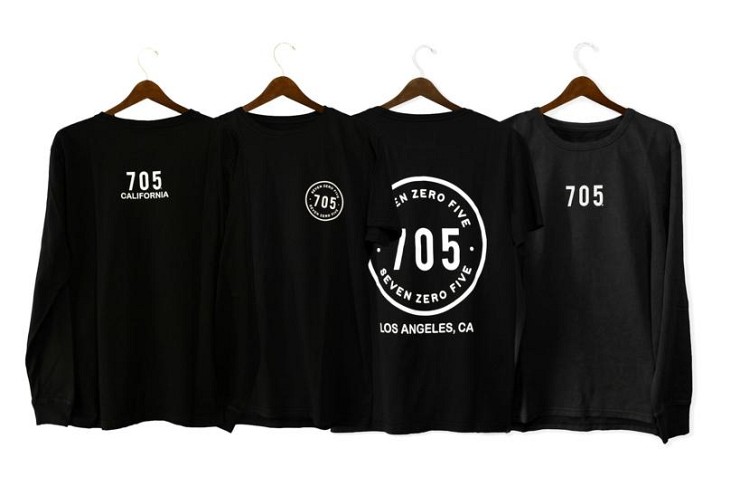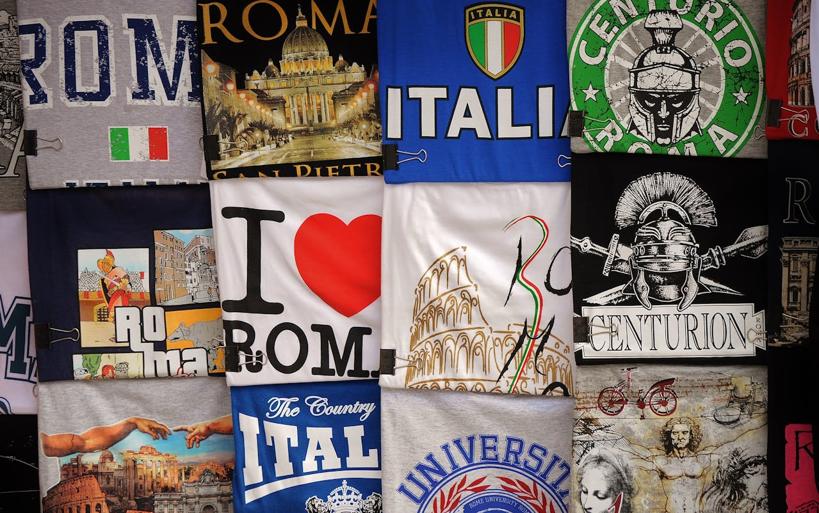Top Design Tips for Your Next Custom T-Shirt
Posted on 28 May 2024

Designing your own clothing isn't just a form of personal expression; it's an opportunity to create something unique that resonates with your personal style or communicates your brand's message. Whether you're crafting a one-of-a-kind t-shirt for a special event, outfitting a team, or launching a fashion line, the ability to design your own clothing empowers you to stand out in a world of off-the-rack standardization.
This guide will walk you through the essential steps and considerations to bring your custom t-shirt designs to life, blending creativity with practical insights to ensure your vision is perfectly translated into wearable art.
Understand Your Audience
The first step in all great t-shirt designs is to clearly define who will be wearing it. The design choices you make should resonate with this group, whether it's for a company event, a local sports team, or a family gathering. Consider the following:
- Event Type and Purpose. If the t-shirt is for a corporate retreat, opt for a design that reflects professionalism with a touch of fun to keep it engaging. For a sports event, vibrant colours and dynamic motifs can enhance the team's energy and unity. Family reunions might call for a design that captures the family's heritage or a humorous inside joke that all members can appreciate.
- Demographic Factors. Age, gender, and interests of the audience can greatly influence design decisions. A younger crowd might appreciate bold, trendy designs, while an older group might prefer more subdued and classic styles.
- Cultural Considerations. Be aware of any cultural sensitivities. Designs should be inclusive and respectful of all participants' backgrounds, avoiding stereotypes or cultural appropriations.
Understanding your audience is crucial not just for aesthetic alignment but also to ensure that the t-shirt is worn with pride and becomes a cherished keepsake.
Choosing the Right Colors
Selecting the right colours for your custom t-shirt is more than just picking your favourites. Colour choices can affect the overall impact of the design, influencing how it is perceived and received by your audience. Here's how to make informed colour decisions:
- Color Harmony. Colours that complement each other create a visually appealing design. Use a colour wheel to find complementary colours (those opposite each other), analogous colours (those next to each other), or triadic colours (three colours evenly spaced around the wheel). This harmony helps the design look cohesive and pleasing to the eye.
- Colour Psychology. Different colours can evoke different feelings and associations. For example, blue can communicate trust and calm, red can signal energy and passion, and green often represents nature and tranquillity. Consider what emotions you want to evoke with your t-shirt and choose colours accordingly.
- Visibility and Contrast. Ensure there is sufficient contrast between the background colour of the shirt and the design elements. This contrast will make your design stand out and be more readable from a distance. For instance, a dark design on a light shirt or vice versa can make a strong impact.
- Specific Themes or Events. If the t-shirt is for a specific event, the colours may need to align with that theme. For example, earth tones might be suitable for an environmental event, or pastels for a springtime activity.
With the right colour combination, you can create a t-shirt that both looks great and effectively communicates your message.

Typography Matters
Choosing the right typography is crucial in t-shirt design, as it greatly affects readability and the overall aesthetic. Here's how to make informed choices about typography:
- Font Style. The style of the font should align with the message and tone of the t-shirt. For example, a bold, blocky font may be ideal for a sports team shirt to convey strength and energy, while a script font might suit a family reunion shirt to add a personal, handmade touch.
- Font Size. The size of the font should ensure that your text is legible from a reasonable distance. Larger text can serve as a focal point or catchphrase, while smaller text might include additional details like dates or locations, which are secondary yet important.
- Legibility. Avoid overly decorative fonts that might be hard to read, especially when printed on fabric. Clarity should never be sacrificed for style. Ensure the font is not only legible at various distances but also in different lighting conditions.
- Hierarchy and Spacing. Use text size and spacing to create a hierarchy of information. The most important message should be the most prominent. Adequate spacing between letters and words will improve the overall readability and impact of your design.
By considering these aspects of typography, you can enhance the visual appeal and effectiveness of your custom t-shirt design, ensuring that when you express yourself, the message is both seen and understood clearly.
Effective Use of Images and Graphics
Integrating images and graphics into your t-shirt design can significantly enhance its appeal and effectiveness. Here's how to make the best use of these visual elements:
- Relevance and Impact. Choose images that directly support or enhance the message of the t-shirt. For instance, a charity event shirt might feature a graphic that represents the cause, like a ribbon for cancer awareness. The image should add value to the design, not detract from the message.
- Image Quality. Always use high-resolution images to avoid pixelation when printed – we recommend a minimum of 300 dpi resolution. Low-quality images can result in a blurry or unprofessional look, which undermines the credibility of your design.
- Balance with Text. If your design includes both text and images, balance them so that one does not overpower the other. They should complement and enhance each other, creating a cohesive look. Consider the placement and sizing of each element to achieve harmony in the design.
- Custom Illustrations vs. Stock Images. While stock images can be convenient and cost-effective, custom illustrations provide uniqueness and can be tailored specifically to your needs. This can make your t-shirt stand out and give it a personal touch that resonates more deeply with the audience.
- Colour Integration. Ensure that the colours used in your images and graphics are consistent with or complement the overall colour scheme of the t-shirt. This consistency helps in creating a visually coherent product.
Thoughtfully selecting and integrating images and graphics helps you create a compelling and memorable t-shirt design that effectively communicates your message and captivates your audience.
Mockups
Creating mockups is a critical step in the design process for custom t-shirts. It allows you to visualize the final product and make necessary adjustments before the full production run. Here's how to effectively use mockups and prototypes:
- Digital Mockups: Start with digital mockups using design software. This allows you to see how the design elements like colours, typography, and graphics will look on a t-shirt. Digital mockups are cost-effective and quick to produce, making it easier to experiment with different ideas.
- Feedback and Revisions: Share the digital mockups with team members, stakeholders, or potential customers to gather feedback. Pay attention to their comments on the design's appeal, readability, and relevance. Use this feedback to make revisions. This iterative process helps refine the design to better meet your goals and audience preferences.
- Final Adjustments. Based on the outcomes of the feedback and revisions, make any final adjustments to the design or the choice of materials. This might involve tweaking the colours, adjusting the scale of the design, or choosing a different fabric to better suit the design's needs.
Utilizing mockups effectively reduces the risk of costly mistakes when you order custom shirts in bulk and helps ensure that the final product meets your expectations and resonates well with your audience.
In Conclusion
In exploring the nuanced art of t-shirt design, we've uncovered that it goes beyond just throwing together graphics and text. It's about crafting a message that stands out and speaks directly to the wearer and their community.
As you embark on this creative journey, don't let common myths about screen printing deter you. Many believe it's too restrictive or low quality, but with today's technologies and techniques, the possibilities are vast and vibrant. Embrace these insights and tools, and you're well on your way to designing t-shirts that are not only visually striking but also meaningful and enduring.
